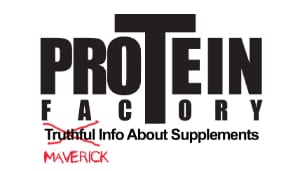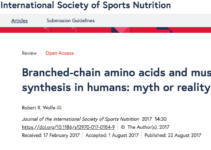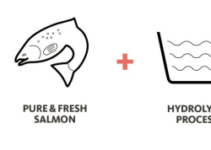Basic Whey Protein Information
Whey protein is the BEST protein for growing muscle mass, getting lean, and looking ripped and toned.
Here’s why…(if you don’t like reading scientific stuff skip down to the whey protein descriptions!!)
Its amino acid composition is very similar to human skeletal muscle protein, providing almost all of the
amino acids in equal proportions [7]. As such, whey protein has a biological value of 104. Proteins with a
value in excess of 100 or more provide all of the required amino acids in the correct ratio. How much
a protein scores over 100 is of no significance. Over a quarter of whey protein is made up of
Branched Chain Amino Acids (BCAAs). These make up one third of muscle protein. BCAAs are important
because, unlike other essential amino acids, they are metabolized directly into muscle tissue and are
the first amino acids used during periods of exercise. BCAAs exert an anti-catabolic effect by
reducing the breakdown of protein and protecting muscle tissue. If present in a plentiful supply, they
can be deaminated by the muscle cell and burned as energy. This conserves glycogen reserves and
helps in aiding stamina. BCAAs also aid nitrogen retention, facilitating the maintenance of sufficient
nitrogen levels to avoid catabolic muscle loss.
Studies have shown that poor quality or imbalanced dietary proteins can increase nitrogen losses and
limit muscle protein synthesis, due to inefficient use of essential amino acids [8]. Over half of the protein in whey is made up of essential amino acids. Around 12% of whey protein is made up of the
essential BCAA, leucine. This plays an important role in protein metabolism and has been identified
as a key stimulus in the initiation of muscle protein synthesis [9]. Whey proteins are more rapidly absorbed by the digestive system. The absorption of other proteins, such as casein, can be slowed by acid coagulation in the stomach [10]. The bioactive components in whey are thought to
act synergistically with calcium to attenuate lipogenesis, accelerate lipolysis and effect nutrient
portioning between adipose tissue and skeletal muscle [11]. Whey proteins are rich in glutamine, which is considered ‘conditionally essential’ during times of intense training [12]. Whey protein is a rich source of bioavailable cysteine, with a concentration three or four times higher than other protein sources, including soya and casein [13]. Cysteine plays a key role in the synthesis of glutathione – the body’s main
antioxidant defense. Intense training can give rise to free radical production, impaired immunity and an
environment of oxidative stress in the body. This promotes the loss of muscle tissue [14]. Many athletes complain of repeated infections and gastrointestinal disturbances. Individual amino acids
and bioactive compounds found in whey can improve immune function and gastrointestinal health
[15]. Hydrolyzed whey proteins provide a readily available source of di and tri peptide fractions.
These are attractive to athletes and other individuals who desire a rapidly absorbed protein source, with
low allergenicity. Whey proteins provide a taste advantage. They can be easily flavored and sweetened. Instantised agglomerated whey powders are highly soluble and easy to reconstitute. This makes them perfect for ready-to-mix (RTM) beverages. There are no documented side effects or danger of overdose, provided that a person does not have an allergy to dairy proteins and is not lactose intolerant
Microfiltration/Ultra filtration Whey Protein Concentrate:
The most widely used source of whey protein. Most whey protein powders are whey protein CONCENTRATES!! This is cool if you are strapped for cash, but the problem with whey protein concentrates is that you have to deal with the fat and lactose. When I used this stuff it gave me gas and my girlfriend kicked me out of bed!! (SUCKS!!) Yea, man I wouldn’t use this stuff. Instead I use a whey isolate.
Ion exchange whey isolate
This was the original whey protein powder when it was first invented. Ion exchange whey isolate is made in the USA. What I like about this protein is that it contains the most protein out of any protein in the world. It can be between 97 and 98 percent pure protein. This means for every scoop of whey protein I use I get about 30 grams of protein. And because the protein is so high I am getting a huge amount of BCAA’s and Glutamine. The BCAA’s are to me the most important thing about whey protein because BCAA’s are the building blocks of muscle. So whenever I use the ion exchange whey isolate I know that I am fueling my muscles with what they need to grow. Lastly the great thing about this protein is that because it is so pure it is completely free of fat and lactose. One day I drank like 100 grams of this protein and didn’t have any digestive problems whatsoever!
Drawbacks.
The drawback to the ion exchange whey isolate is that you do not get the protein subfractions and the bioactivity of other proteins. Because ion exchange whey isolate is made using ionic charges some of the protein subfractions are somewhat destroyed. That’s really the only drawback to ion exchange whey isolate. So overall this is an awesome protein powder to use. To make up for the loss of protein subfractions, I buy myself a native whey protein isolate from an online protein store. It’s the only one I found in the world. I then combine the ion exchange whey isolate with the native whey isolate (1 scoop of each) and use them in my protein shake.
Tip: I take 1 scoop of ion exchange whey isolate and then in a bowl of milk that you would use for cereal. Then I mix in the ion exchange whey isolate into the milk Then I pour in some cereal, I like Frosted Flakes. This makes an awesome post workout meal. Because I get my protein, carbs, and high GI carbs. This spikes my insulin level to shuttle the amino acids into the muscle and helps me really repair and grow.
Alex Rogers is a supplement manufacturing expert. He has been formulating, consulting, & manufacturing dietary supplements since 1998. Alex invented protein customization in 1998 & was the first company to allow consumers to create their own protein blends. He helped create the first supplement to contain natural follistatin, invented whey protein with egg lecithin, & recently imported the world’s first 100% hydrolyzed whey.






